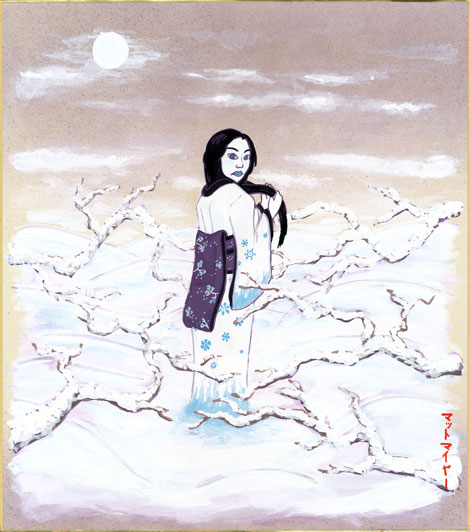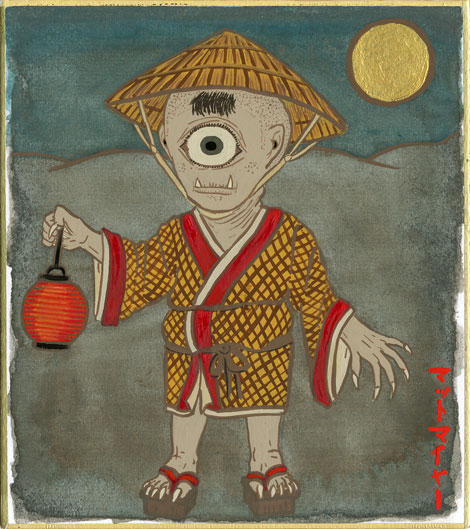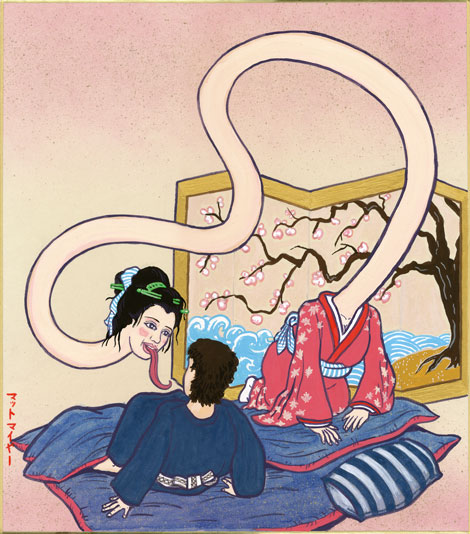The month is just about halfway done, and I wanted to save some of the more Halloween-ish yokai for a date closer to Halloween… well I think that time has come. Today’s yokai is another one of my favorites: Yuki-onna, the snow woman. There are a few legends surround her, but the most famous one, as told by Lafcadio Hearn (and shamelessly copied from Wikipedia), goes like this:
A long time ago, there lived two woodcutters, Minokichi and Mosaku. Minokichi was young and Mosaku was very old.
One winter day, they could not come back home because of a snowstorm. They found a hut in the mountain and decided to sleep there. On this particular evening, Minokichi woke up and found a beautiful lady with white clothes. She breathed on old Mosaku and he was frozen to death.
She then approached Minokichi to breathe on him, but stared at him for a while, and said, “I thought I was going to kill you, the same as that old man, but I will not, because you are young and beautiful. You must not tell anyone about this incident. If you tell anyone about me, I will kill you.”
Several years later, Minokichi met a beautiful young lady, named Oyuki (yuki = “snow”) and married her. She was a good wife. Minokichi and Oyuki had several children and lived happily for many years. Mysteriously, she did not age.
One night, after the children were asleep, Minokichi said to Oyuki: “Whenever I see you, I am reminded of a mysterious incident that happened to me. When I was young, I met a beautiful young lady like you. I do not know whether it was dream or she was a Yuki-onna…”
After finishing his story, Oyuki suddenly stood up, and said “That woman you met was me! I told you that I would kill you if you ever told anyone about that incident. However, I can’t kill you because of our children. Take care of our children… ” Then she melted and disappeared. No one saw her again.
There are a few other versions of the story, but I like that one best, partially because it’s the first one I heard — or actually saw, on a Japanese ghost stories DVD. She is another very popular yokai in Japanese pop culture, appearing in many comic books, games, and so on.

Yuki-onna






